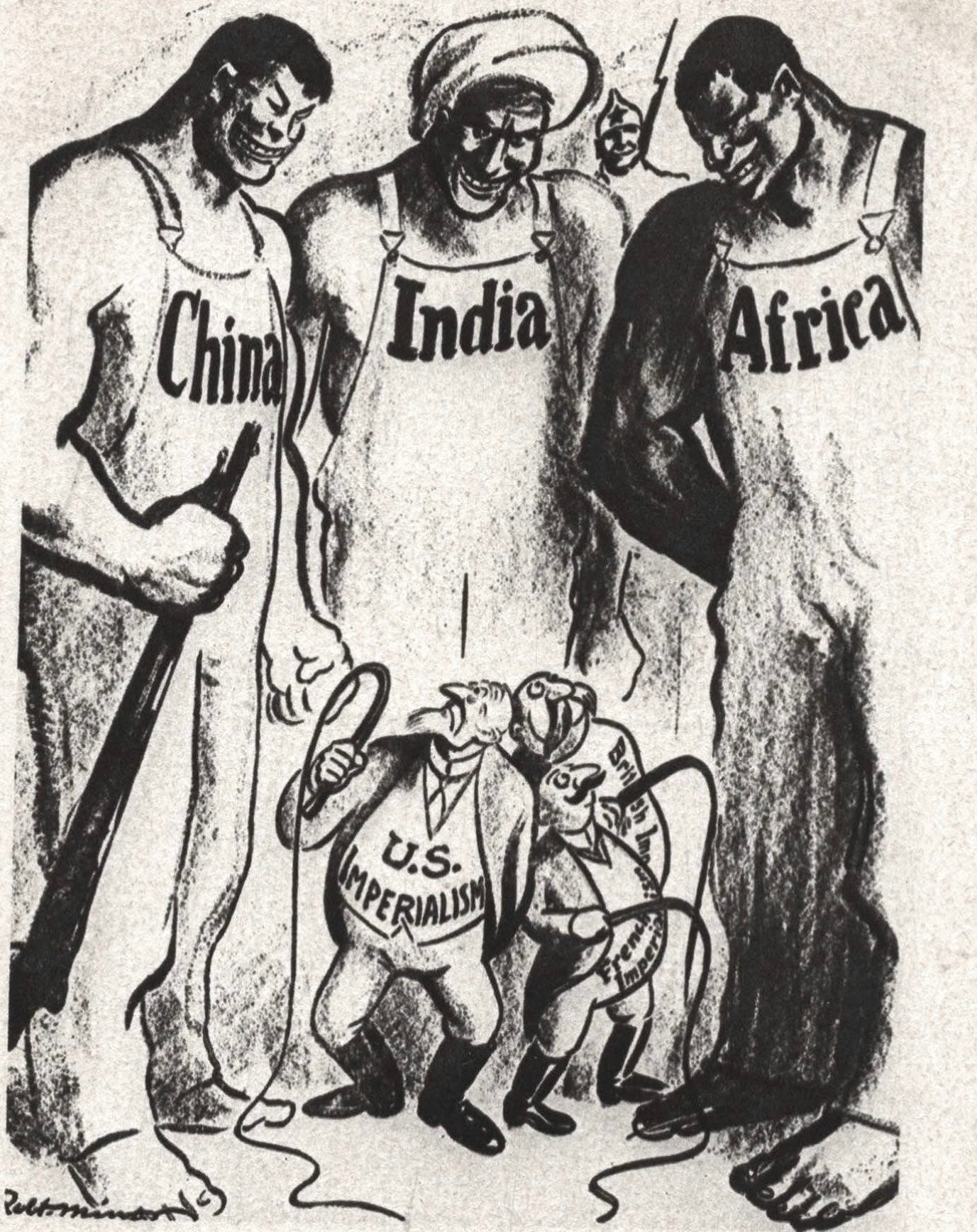The Murderous Despot Who Retired In England.
On This Day, Photo of the Week, Sean Connery & Stentorian.
BOC#034
7 MINUTE MUNCH
TITLE PIECE: THE ARGENTINIAN DICTATOR WHO RETIRED IN THE ENGLISH COUNTRYSIDE.
While visiting the Southern Pampas region of Argentina, Charles Darwin encountered and engaged with one of South America’s most brutal dictators. A man whose ties with England would see him spend his remaining years under the protection of the Hampshire countryside courtesy of the British taxpayer.
Juan Manuel De Rosas, as he was known, was on campaign against the native Indians on the temperate grasslands of Argentina when the Beagle arrived at the southern tip of the continent in 1833. Darwin’s impressions were such that he called Rosas:
“…a man of extraordinary character, and has a most predominant influence in the country, which it seems probable he will use to its prosperity and advancement…He first gained his celebrity by his laws for his own estancias, and by disciplining several hundred men, so as to resist with success the attacks of Indians.”
- Lynch, John. Argentine Caudillo: Juan Manuel de Rosas.
But the side of Rosas Darwin likely didn’t see was one of violence, despotism and murder. Rosismo, as his premiership came to be known, was built on the accumulation and promise of land. John Lynch writes:
Who was Rosas? A landowner. What did he accumulate? Land. What did he give to his supporters? Land. What did he take from his enemies? Land.
- Lynch, John. Argentine Caudillo: Juan Manuel de Rosas.
In 1810 the Spanish were kicked out of Argentina in what is known as the ‘May Revolution’. Rosas who preferred the order of colonial rule was disgusted by the execution of the former viceroy, counter-revolutionary, and royalist, Santiago Liniers. He saw Spanish colonialism as an era of prosperity and social order.
Rosas had two tenures as the governor of Buenos Aires, once from 1829 to 1832 and another from 1835 to 1852. The legacy of his first premiership was one of stability and tranquility. He strengthened the army, protected the church, silenced critics and ‘muzzled the press’. He neglected education, improved the financial credit of the government, and kept exports flowing. This, so it would seem, was enough to see him return to power for a second term.
During his second term he was repeatedly voted in by the House of Representatives, 60 percent of whom were landowners, or were connected to the land by way of occupation. One such man, Nicolás Anchorena, was the greatest landowner in the province having accumulated 1,836,000 acres by the end of Rosismo in 1852. An emphasis on land thus became a predictable and successful formula for the procurement of political support.
Being the expansionist that he was, Rosas led campaigns into the southern ‘Indian’ territories advancing and settling. Two of his most significant estancias (ranches) were Los Cerrillos and San Martín, in the Guardía del Monte on the Río Salado up against the Indian frontier. When Darwin visited Los Cerrillos he wrote that it was:
“…one of the great estancias of General Rosas. It was fortified and of such an extent, that arriving in the dark I thought it was a town and fortress. In the morning we saw immense herds of cattle, the general here having seventy-four leagues of land.”
In 1832, the Rosas government granted land to war veterans and ranchers who’d been affected by a recent drought. In one year, Rosas’ desert campaigns saw thousands of square miles west towards the Andes and south beyond the river Negro added to Buenos Aires, granting him the title ‘conquistador del desierto’ (conqueror of the desert). In a message to his troops he is recorded as having said: “The fine territories, which extend from the Andes to the coast and down to the Magellan Straits are now wide open for our children.”
Land eventually became a means of rewarding loyalty, paying soldier’s salaries, and issuing pensions. This emphasis on land polarized Argentinian society as an upper class of landowners marginalized the poorer lower classes. Rosas treated the countryside as a vast estancia, administering it with the appointment of feudal lords known as a Justices of the Peace.
Rosas was a proponent of slavery, deeming it necessary to supply labor for the estancias, industries, and households. It comes as no surprise, then, that he was also a supporter of lashing slaves to preserve obedience and social order. While the British had pressed for a ban on slavery, Rosas resisted until he required British support against a French blockade in 1838, that was. An anti-slave trade treaty was signed on May 24, 1839, although slavery wasn’t fully abolished in the whole of Argentina until the constitution of 1853.
Rosas was obsessed with obedience and order, and divided society into those who commanded and those who obeyed. Argentina was divided by the two opposing ideas of Unitarianism and Federalism, the latter of which preferred a decentralized system of regional powers as opposed to a centralized, unified state. Rosas was a federalist who despised Unitarians, seeing them as liberal enemies of Jesus who believed in the secular values of humanism and progress. John Lynch writes:
People were obliged to dress in a kind of uniform and to use the federalist color, red. Women were expected to wear red ribbons in their hair, men to have a fierce and hirsute look and wear red silk badges bearing the inscription “Long live the Argentine Confederation. Death to the Savage Unitarians.”
The justice system was under the strict ordinance of Rosas himself, interpreting, changing, and applying the law. He took the time to read many cases himself, marking their files with judgements like “shoot him,” “fine him,” “imprison him,” or “to the army.” He also used the church to his advantage, treating the clergy as a branch of the bureaucracy, appointing federalists to church positions while keeping papal jurisdiction out of Argentina.
His perception of sovereignty was one of immunity from criticism, punishment, and dissent, with the added function of power over life itself. He believed that the right to wage war, impose taxes, and to prescribe the law were all components of his authority.
Rosismo was defined by state sponsored terrorism whereby the preferred method of executing his Unitarian opponents were shooting, a thrust of the lance, or throat cutting; the latter being his personal favorite.
In October 1940 when state terrorism was at its peak, a period known as ‘The Great Terror’, headless bodies could be found in the streets every morning, often displayed on poles erect in public squares. Rosas’ security agency, the Sociedad Popular Restaurador would gather intelligence while the Mazorca arm would carry out the actual acts of terror. The Mazorca was oftentimes considered more brutal than Rosas himself, executing with a degree of semi-autonomy, like an unleashed beast he couldn’t control.
A second period of terror began in 1842. John Lynch writes:
In the last days of March each morning at dawn, corpses were found with their throats cut in various parts of the capital, and this carnage continued into April. Many of these killings were surrounded by mystery and committed at night. Others took place during the day. Two or three men would walk up to a victim in the street or in his house and shoot him at point-blank range or seize him and cut his throat; they would then leave unmolested while those nearby averted their faces. Assassins operated with impunity at dances, in homes and offices, and on public thoroughfares.
Rosas has since gone down as one of history’s cruelest dictators thanks to his Hobbesian belief that fear was crucial to any functioning society. As good looking and good natured as Rosas was considered to have been in private, his intellectual decline took a turn for the worst in 1848. Harry Thompson writes:
Rosas, like so many of his ilk, eventually pushed his military adventures a step too far. Eager to increase his territory, he attempted to invade both Brazil and Uruguay at the same time. It was a vicious and senseless war: at one point, he ordered the execution in cold blood of five hundred Uruguayan prisoners-of-war (of Indian extraction, naturally). But Rosas had bitten off more than he could chew, and his armies were eventually defeated at the battle of Caseros. Where did the fallen dictator go? Why, to England, of course, where this most brutal of mass-murderers was received by the British government with open arms. He was treated as a dignitary and given a luxurious retirement home at Swaythling, Hampshire, funded by the taxpayer, where he peacefully ended his days in 1884. - This Thing of Darkness, Harry Thompson.
So, in 1852 he boarded the steamship HMS Conflict, disembarking at Plymouth, England on April 26th taking quarters at Moorshead’s Royal Hotel, Devonport. He was greeted by a twenty-one gun salute, and having passed through a reception of dignitaries, was briskly cleared through customs. One Times reporter wrote:
“Marvellous has been the eagerness of English gentlemen, high in military and naval authority, to grasp his bloodstained hand.” - Lynch, John. Argentine Caudillo: Juan Manuel de Rosas.
Questions were asked in the House of Lords, to which the Foreign Secretary, the Earl of Malmesbury replied that he was:
“…no common refugee, but one who had shown great distinction and kindness to the British merchants who had traded with his country, and one with whom the late Government had carried on negotiations of an important character, and had even signed a Treaty in 1849.”1
Following years of oppression, slavery, murder, and despotism, Rosas settled in England, beginning his exile first in Southampton, then on a small farm at Swaythling, some three miles beyond the town. He died in 1877.
DID YOU KNOW…
Altogether, your private load of microbes weighs roughly three pounds, about the same as your brain.
ON THIS DAY: 25th AUGUST:
The Oriental Republic of Uruguay declared its independence from Brazil today in 1825.
Voyager 1, the space probe launched by NASA in 1977, became the first spacecraft to enter the interstellar medium today in 2012.
Today, it’s National Kiss and Make Up Day - Sort it out!
Bob Minor's 1925 cartoon predicts the fall of Western imperialism as China, India, Africa, and Russia rise, shifting global power away from U.S. and British dominance.
STENTORIAN:
In Greek mythology, Stentor had a particularly loud voice, described in Homer's Iliad as having a voice as loud as fifty men combined. Sentorian is thus applied to any loud voice or sound. You might express your views in a stentorian tone, or ring a doorbell in a stentorian manner.
FROM THE ACTORS MOUTH:
The Scottish actor and producer Sean Connery, CBE, who starred as James Bond 7 times, was born today in 1930 in Edinburgh.
MISSED LAST WEEK? Read Here: The Man Who Stole India
[Links marked with * are affiliate links]
House of Lords, April 29, 1852, Parliamentary Debates, 3d Series.












wow, very interesting. Is history repeating itself? That England welcomed him with open arms is an affront to humanity. Thanks for the history lesson!
History told this way reads almost like satire, how quickly violence is washed clean once it becomes useful to empire.
Do you think the greater obscenity is Rosas’ brutality, or the ease with which “civilized” nations cradle men like him when their crimes align with trade and profit?